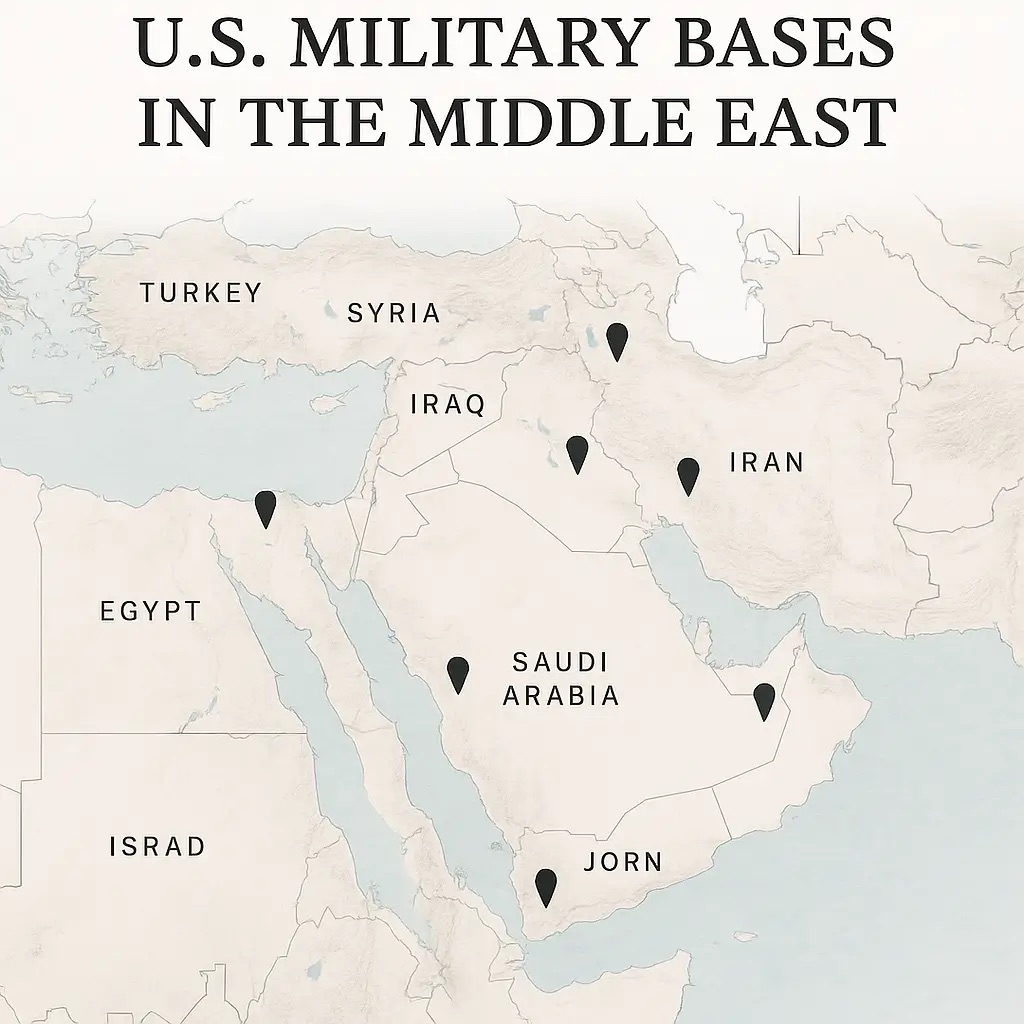The United States Military Footprint in the Middle East
For decades, the United States has maintained a strong military presence across the Middle East. This presence, often seen as a strategic necessity by Washington, has now grown more significant as tensions once again begin to rise in the region.
Currently, an estimated 40,000 to 50,000 U.S. troops are stationed across at least 19 major military sites in the Middle East. These installations serve a variety of strategic, diplomatic, and security functions—from counterterrorism operations to power projection, regional deterrence, and protecting American interests.
Rising Tensions Prompt Embassy Drawdown
On June 12, 2025, the U.S. government announced a partial evacuation of its embassy in Iraq. The State Department also authorized the voluntary departure of American personnel dependents from several key Gulf nations, including:
- Bahrain
- Kuwait
- United Arab Emirates (UAE)
This move reflects growing unease in Washington about the potential for conflict escalation or attacks targeting American assets in the region.
Trump’s Warning: “The Region Could Be Dangerous”
Speaking on Wednesday evening, President Donald Trump stated that the decision was made as a precaution due to the possibility of the Middle East becoming “a dangerous place.” Although no immediate threat was named publicly, the U.S. government appears to be acting preemptively in response to shifting dynamics and increased instability in the region.
Key U.S. Military Bases in the Middle East
Here’s an overview of some of the most prominent American military bases currently active in the region:
1. Al Udeid Air Base – Qatar
One of the largest U.S. military installations outside the U.S., Al Udeid is a central hub for air operations, hosting thousands of personnel and advanced aircraft.
2. Camp Arifjan – Kuwait
Camp Arifjan serves as a vital logistics and command center, supporting operations in Iraq and across the region.
3. Naval Support Activity – Bahrain
The U.S. Navy’s Fifth Fleet is headquartered in Bahrain, providing maritime security and support across the Persian Gulf and Arabian Sea.
4. Al Dhafra Air Base – UAE
Located near Abu Dhabi, this air base is crucial for surveillance, reconnaissance, and rapid-response missions.
5. Ain al-Asad Air Base – Iraq
Home to both U.S. and Iraqi forces, this base has been at the center of past tensions, including missile strikes and drone attacks.
6. Incirlik Air Base – Turkey
Though not part of the Arabian Peninsula, Incirlik plays a strategic role for U.S. operations extending into the Middle East and Eastern Europe.
Why the U.S. Presence Matters
America’s military presence in the Middle East serves several objectives:
- Deterring aggression from hostile regional powers
- Maintaining open sea lanes and protecting oil routes
- Preventing the resurgence of extremist groups like ISIS
- Supporting allies, including Israel, Saudi Arabia, and the Gulf states
- Responding quickly to emerging threats and humanitarian crises
However, this presence is not without controversy. Critics argue that it often fuels anti-American sentiment, while some in the U.S. question the cost and strategic value of maintaining so many overseas troops.
What Comes Next?
With embassy staff being moved and dependents evacuated, there are growing signs that the U.S. is bracing for the possibility of conflict or attacks—whether state-sponsored or by armed non-state groups. In a region as volatile as the Middle East, preemptive caution often signals that something deeper is brewing.
While the U.S. has not committed to a full withdrawal or military escalation, this repositioning of personnel may foreshadow a shift in how America engages with the region in the coming months.
Conclusion
The extensive network of U.S. military bases across the Middle East highlights Washington’s long-term strategic commitment to the region. With around 40,000 to 50,000 troops spread over at least 19 major locations, these deployments serve as both a deterrent and a response mechanism to regional threats. However, the recent move to partially evacuate embassy staff and families reflects growing instability and the unpredictable nature of Middle Eastern geopolitics. As tensions simmer, the future of America’s military footprint in the region remains uncertain—balanced between security interests, political will, and the evolving global order.

